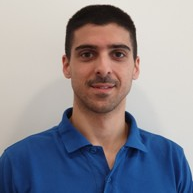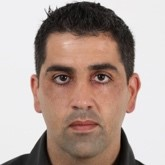Training Process in Soccer Players
A special issue of Sports (ISSN 2075-4663).
Deadline for manuscript submissions: closed (31 December 2019) | Viewed by 84557
Special Issue Editors
Interests: football; soccer; match analysis; performance analysis; network analysis
Special Issues, Collections and Topics in MDPI journals
Interests: match analysis; talent identification; sports training; team sports; small-sided games
Special Issues, Collections and Topics in MDPI journals
Interests: soccer; association football; teaching and learning; match analysis; team sports; small-sided and conditioned games
Interests: physical education; models-based practice; sports; decision-making
Special Issues, Collections and Topics in MDPI journals
Special Issue Information
Dear Colleagues,
This Special Issue ‘Training Process in Soccer Players’ is a new venue to publish original research, meta-analyses, reviews, case studies, short communications and book reviews related to soccer-training topics. This Special Issue aims to publish research on various aspects of soccer training, including: (i) small-sided games; (ii) high intensity interval training on soccer players; (iii) training monitoring and testing; (iv) periodization; (v) physiology of soccer; and (vi) coaching in soccer. Any other topics are welcome to this Special Issue, especially articles that bring new theoretical and practical approaches to the soccer field.
Prof. Filipe Manuel Clemente
Prof. Hugo Sarmento
Prof. Israel Teoldo Costa
Prof. Sixto González-Víllora
Guest Editors
Manuscript Submission Information
Manuscripts should be submitted online at www.mdpi.com by registering and logging in to this website. Once you are registered, click here to go to the submission form. Manuscripts can be submitted until the deadline. All submissions that pass pre-check are peer-reviewed. Accepted papers will be published continuously in the journal (as soon as accepted) and will be listed together on the special issue website. Research articles, review articles as well as short communications are invited. For planned papers, a title and short abstract (about 100 words) can be sent to the Editorial Office for announcement on this website.
Submitted manuscripts should not have been published previously, nor be under consideration for publication elsewhere (except conference proceedings papers). All manuscripts are thoroughly refereed through a single-blind peer-review process. A guide for authors and other relevant information for submission of manuscripts is available on the Instructions for Authors page. Sports is an international peer-reviewed open access monthly journal published by MDPI.
Please visit the Instructions for Authors page before submitting a manuscript. The Article Processing Charge (APC) for publication in this open access journal is 1800 CHF (Swiss Francs). Submitted papers should be well formatted and use good English. Authors may use MDPI's English editing service prior to publication or during author revisions.
Keywords
- Association Football
- Soccer
- Sports training
- Small-sided games
- High intensity interval training
- Periodization
- Training monitoring and testing
- Pedagogy and teaching









